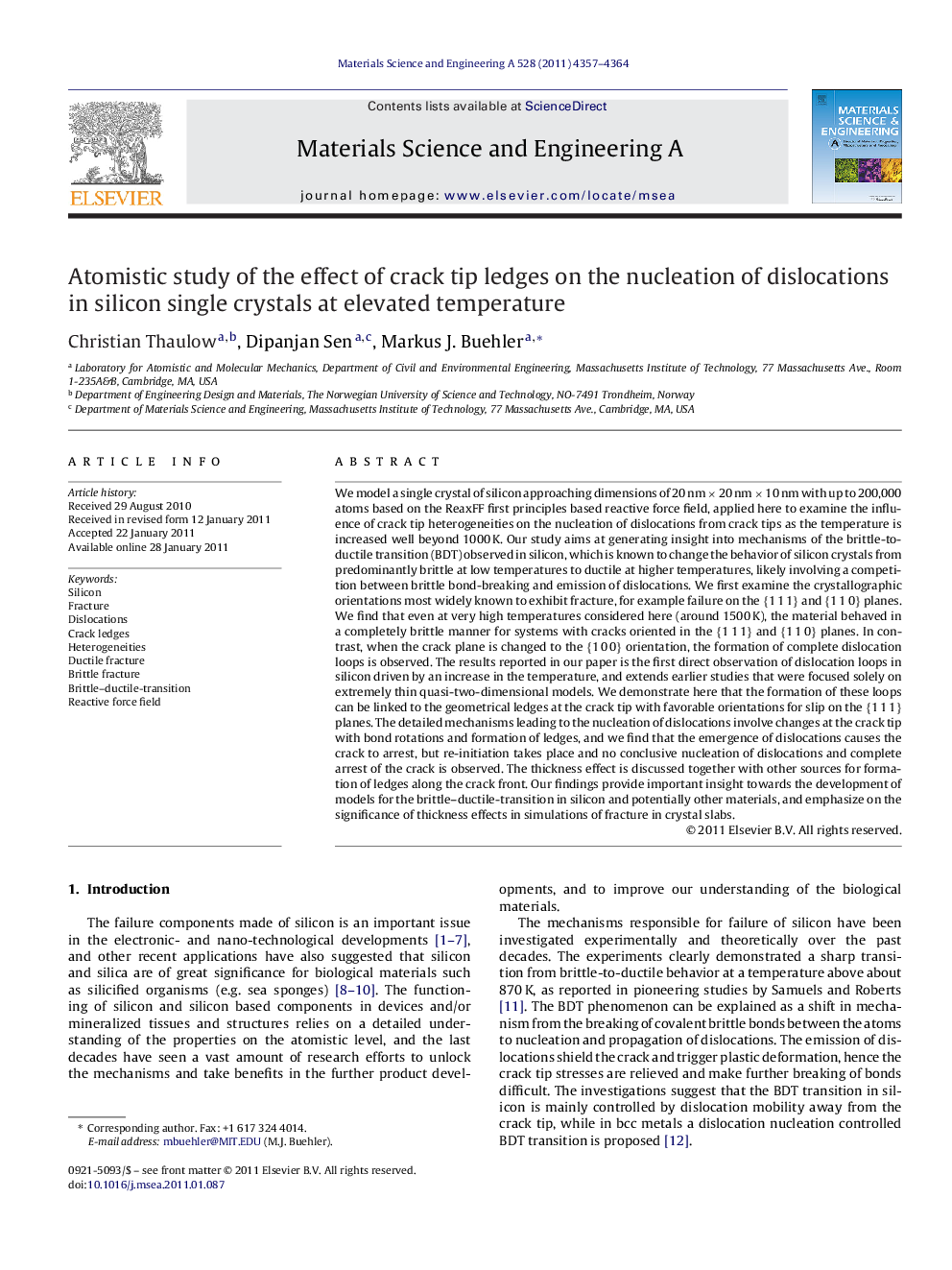| کد مقاله | کد نشریه | سال انتشار | مقاله انگلیسی | نسخه تمام متن |
|---|---|---|---|---|
| 1578698 | 1514820 | 2011 | 8 صفحه PDF | دانلود رایگان |

We model a single crystal of silicon approaching dimensions of 20 nm × 20 nm × 10 nm with up to 200,000 atoms based on the ReaxFF first principles based reactive force field, applied here to examine the influence of crack tip heterogeneities on the nucleation of dislocations from crack tips as the temperature is increased well beyond 1000 K. Our study aims at generating insight into mechanisms of the brittle-to-ductile transition (BDT) observed in silicon, which is known to change the behavior of silicon crystals from predominantly brittle at low temperatures to ductile at higher temperatures, likely involving a competition between brittle bond-breaking and emission of dislocations. We first examine the crystallographic orientations most widely known to exhibit fracture, for example failure on the {1 1 1} and {1 1 0} planes. We find that even at very high temperatures considered here (around 1500 K), the material behaved in a completely brittle manner for systems with cracks oriented in the {1 1 1} and {1 1 0} planes. In contrast, when the crack plane is changed to the {1 0 0} orientation, the formation of complete dislocation loops is observed. The results reported in our paper is the first direct observation of dislocation loops in silicon driven by an increase in the temperature, and extends earlier studies that were focused solely on extremely thin quasi-two-dimensional models. We demonstrate here that the formation of these loops can be linked to the geometrical ledges at the crack tip with favorable orientations for slip on the {1 1 1} planes. The detailed mechanisms leading to the nucleation of dislocations involve changes at the crack tip with bond rotations and formation of ledges, and we find that the emergence of dislocations causes the crack to arrest, but re-initiation takes place and no conclusive nucleation of dislocations and complete arrest of the crack is observed. The thickness effect is discussed together with other sources for formation of ledges along the crack front. Our findings provide important insight towards the development of models for the brittle–ductile-transition in silicon and potentially other materials, and emphasize on the significance of thickness effects in simulations of fracture in crystal slabs.
.Figure optionsDownload as PowerPoint slideResearch highlights
► Large three-dimensional silicon single crystal of size 20 nm × 20 nm × 10 nm modeled by first principles based ReaxFF force field.
► First direct observation of three-dimensional dislocation loops at cracks solely driven by temperature increase.
► Dislocation loop formation linked to geometrical ledges at crack tip oriented on slip planes.
► Nucleation of dislocations at crack tip involves bond rotations and ledge formation.
► Significance of system thickness in simulations of fracture in single crystals of silicon shown.
Journal: Materials Science and Engineering: A - Volume 528, Issues 13–14, 25 May 2011, Pages 4357–4364